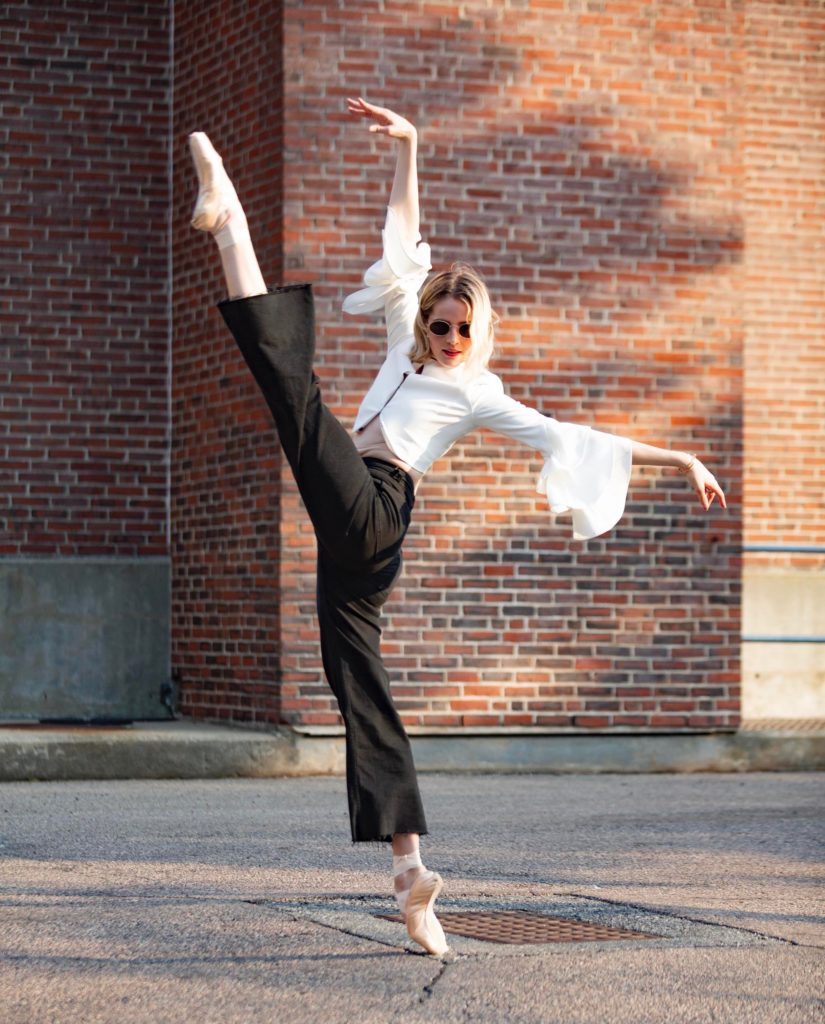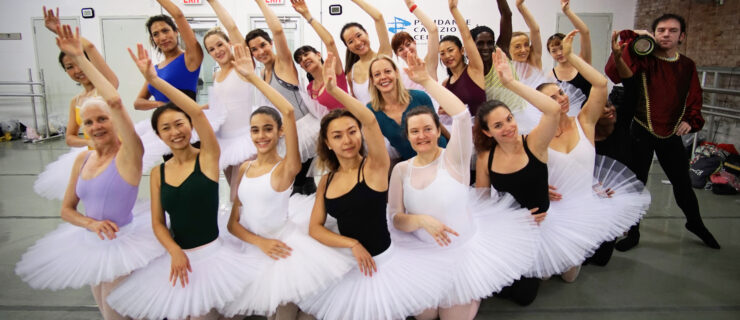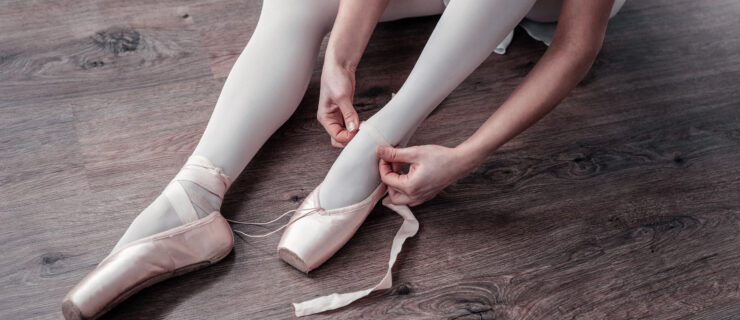Grooming and Sexual Abuse in Ballet: Why Dancers Are Especially Vulnerable
For the last several years, accusations of sexual abuse in ballet have seemed constant. While these revelations signal a willingness by dancers to speak out against abuse, they can also leave us wondering how anyone could have missed the signs. The troubling answer is that these abuses were not isolated; they occurred over time, and under the ballet institution’s watchful eye.
Earlier this year Dusty Button, a former Boston Ballet star who once appeared on the cover of Pointe, and her husband, Mitchell Taylor Button, a former dance teacher, were accused of sexual abuse by five dancers in multiple states. In at least two of those cases, they allegedly used their position of power in the dance community to earn the trust of their victims, ultimately conditioning them for abuses, including rape. (A lawyer for the Buttons, who have denied the allegations, did not respond to requests for comment.)
The case has spotlighted the issue of grooming and how it plays a role in abuse. Jo-Anne La Flèche, a psychologist who works with dancers in Montreal, says, “Grooming is a process where a person uses attitudes, remarks and behaviors to influence someone to do something for their own personal benefit.”
Unfortunately, ballet’s rigid hierarchy, job scarcity and conditioning of dancers to be compliant makes it a comfortable environment for perpetrators to thrive in. Our dance community needs systemic change in addition to individual action to protect dancers. With more transparency in dance spaces, and a willingness to have uncomfortable conversations, we can better identify and address grooming when it happens.
Power and Celebrity
According to La Flèche, a groomer must be in a position of power to be successful. “Generally, the dancer is on the more vulnerable end of that power stick,” she says. Victims and survivors usually have a need the perpetrator can fill; for dancers this could be access to lessons, introductions to directors and choreographers, casting for desired roles, jobs and more. When looking at recent accusations of sexual assault and misconduct in dance—the Buttons, Viktor Kabaniaev, Alexander Boitsov, Ballet West Scotland’s Jonathan Barton and former English National Ballet principal Yat-Sen Chang, among others—it is clear that the most vulnerable among us are students or apprentice-level dancers.
Ballet’s strict hierarchy is deeply ingrained. “From the time I was 4 years old and started to dance I was aware of the hierarchy. Whoever is at the front of the room is the authority figure,” says Boston Ballet dancer Sage Humphries, one of the five plaintiffs who filed the lawsuit against the Buttons. From there power trickles down to company members and even the older students in the school. Dancers rarely question their authority. “Seniority means so much in our community that we trust that over our own instincts sometimes,” Humphries says.
Abusers who groom their victims lean into their celebrity or power. Steven Karageanes, a Detroit-based physician who works with dancers, attended medical school with Larry Nassar, the convicted USA Gymnastics team doctor who was accused of abusing more than 300 gymnasts. “One of the more nefarious things about Larry was that he had pictures of all the famous gymnasts he worked with on his wall,” he says. “Someone seeing him in his clinic is sitting there thinking, I want to be on this wall.” These kinds of reminders of the abuser’s authority are part of the grooming process.
Access
As is often the case with abuse revelations, Karageanes was shocked to learn of the charges against Nassar. (He was so troubled that he has since dedicated himself to multiple organizations fighting abuse in dance settings, including being an advisor for Youth Protection Advocates in Dance.) In hindsight, however, there were clues. Among them was the way Nassar used his access to the gymnasts outside of clinical locations to forge close personal relationships with them. “He was with them all the time at camp and in competition,” says Karageanes.
La Flèche points out that because of their authority or celebrity, perpetrators may also have access to private spaces in otherwise public places. “These predators will have a lot more leeway in dance venues and on tours where the dancer does not have the same access,” she says. Examples include a private dressing room, a hotel room, keys to the studio or permission to use backstage areas. Being granted access to these spaces can make a dancer feel special, but they can also serve as private places to enact abuse.
Isolation
For grooming to be effective, the victim needs to be removed from their support networks, such as friends and family, who may notice something that isn’t right. Sometimes this is physical isolation. Humphries lived with her accused abusers, and her lawsuit against them states that they took control of her social media, covered her expenses and forbade her from making other friends. Karageanes says that one of the revelations about Nassar following his conviction was that he frequently dismissed resident doctors and assistants from the exam room.
The isolation may also be emotional. Humphries points out that the most vulnerable times of a dancer’s life is during their pre-professional training and transition to professional dancer. “I moved to a new city and had no friends or family in the area,” says Humphries, who was a member of Boston Ballet II at the time. “I was a vulnerable target, and there wasn’t anyone that I knew well enough to ask for help. The way I saw it, I was lucky to be friends with such a prominent figure in our community.”
Time
When we hear the words “abuse” or “assault,” we often think of being attacked by a stranger in a dark alley. But according to La Flèche, “grooming is a very subtle and slow process.”
Humphries says that at the beginning of their relationship, the Buttons established a fun, fostering environment. But over time things changed. “One day it was just us hanging out and the next I had no control over the activities that I did, even if it was just doing laundry or going to the grocery store,” she says. “By the time that it got really bad I was completely trapped.”

In the dance world those with authority—teachers, choreographers, guest artists—often work in multiple dance spaces within their community. “Nobody wants to think that their colleague is an abuser, and it is a lot easier to be in a denial process if the people are transient,” says La Flèche. “If we have a teacher who is there three hours a week, it’s going to take a while to see what is going on.”
Gifts, Promises and Affection
During the grooming process, an abuser tries to fulfill the victim’s unmet needs, sometimes with tangible gifts. Karageanes remembers that Nassar would come home from the Olympics with all kinds of exclusive mementos for his clients. He also notes that in a difficult training environment, Nassar positioned himself as the “good cop” by bringing candy to gymnasts on strict diets and portraying himself as their advocate.
Some of the most influential gifts, however, are emotional. It can begin with texts and private messages from someone you admire or desire acceptance from. “They will say things like ‘I am going to let you have this privilege, but don’t say anything to anybody,’” says La Flèche. “Or, ‘This is the first time I have felt this way.’ They will declare love and admiration: ‘I see myself in you. You have so much potential.’” From there, things escalate.
Abusers profit from low self-esteem and perfectionism, which Humphries says makes dancers ideal candidates for grooming. “It is amazing what one word of affirmation can make you feel in a class,” she says.
Culture of Silence
From their first pre-ballet class, dancers are taught to be seen and not heard. “I want to abolish the culture of silence,” says Humphries. “You go into a professional setting, and it is the same thing. You’re terrified to speak about something like this because you think that nobody will care and that you might get in trouble.”
Ballet companies and schools should establish clear protocols for reporting abuse and inappropriate behavior, and the person designated to receive this information should, ideally, not be a member of artistic staff. A human resources manager would be an example. “You need a third party, somebody who is not engaged in the artistic staff,” Humphries adds.
Spotting Red Flags
No isolated red flag outlined in this article is a sure sign of grooming, but you should be wary if you notice any and be on the lookout for others. If you have concerns that a peer, student or child is being groomed or abused, it is important to express them to the dancer. But Humphries says to be prepared for a defensive response. “I had a friend ask me if I was okay, and I was hyper-defensive because I was told by my abusers to shut down any criticism of them,” she says. “Hyper-defensive speech and comments can be a sign that something deeper is going on.”
The most important thing we can do to combat grooming and abuse is to talk about it openly. “I think that young children going into their professional careers do not have enough information about what is correct and appropriate conduct and what is not,” says Humphries. La Flèche agrees. “Often dancers don’t know that they are being abused because they think this process is normal,” she says.
The best defense against grooming behavior is transparency between leadership, teachers, dancers and anyone else involved in the studio setting. Background checks should be routine, as well as references from previous employers. It is also imperative to understand mandated reporting requirements in your state. Every ballet institution has the responsibility to cultivate open-door policies to combat abuse and protect the most vulnerable members of their community: the dancers.
Resources:
· To be connected with a trained staff member from a sexual assault service provider in your area, contact The National Sexual Assault Hotline at 800.656.4673.
· More information on grooming can be found at Darkness to Light and Helping Survivors.
· Go to Youth Protection Advocates in Dance and the Dance Education Equity Association for resources and training to prevent abuse in the dance setting.
· Visit The Dance Safe for peer-ed support groups. Engage with community on these issues with dancersconnect.de.
· Download free tools and worksheets from Whistle While You Work.






